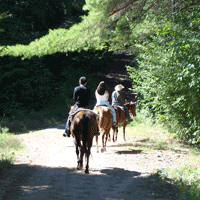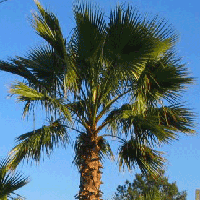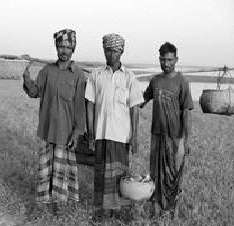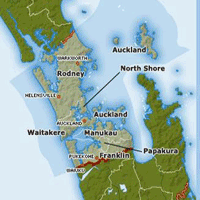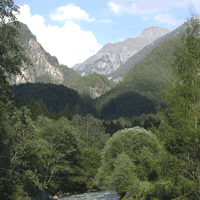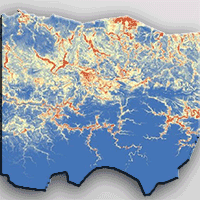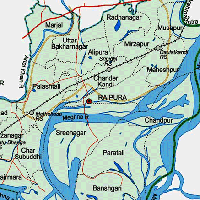
Implications of ecotourism development in protected areas: a study from Rema-Kalenga Wildlife Sanctuary, Bangladesh
MP Rana (1) , MSI Sohel (1), SA Mukul (2), MSH Chowdhury (3), S Akhter (1), Q Chowdhury (1), M Koike (3)
iForest - Biogeosciences and Forestry, Volume 3, Issue 1, Pages 23-29 (2010)
doi: https://doi.org/10.3832/ifor0520-003
Published: Jan 22, 2010 - Copyright © 2010 SISEF
Research Articles
Abstract
This article is based on visitors profile study of protected area based tourist spots of Rema-Kalenga Wildlife Sanctuary (RKWS), Bangladesh to ascertain the potential of ecotourism. Study findings shows that 69% male constitute the visitors group while the maximum number of visitors was found in the age of below 30 years. Most of the visitors were literate and among them 43% visitors were student. Most (53%) of visitors preferred to get recreation in holidays as they were employed. Visitors were highly preferred to come with friends group. About 92% respondents showed positive mind to come here in future while 89% respondents view that park has tourism potential. Most of the respondents reported the presence of wildlife (48%) most notable followed by plant diversity and tribal community as recreational. From χ2 test it is found that highly significance association present between tourism potentiality of the wildlife sanctuary and some demographic variable like income of tourists (χ2 = 49.138, p < 0.000), visiting pattern (χ2 = 19.344, p < 0.000), education of tourists (χ2 = 50.226, p < 0.000), travelling distance (Km - χ2 = 11.427, p < 0.022), duration of staying (χ2 = 12.867, p < 0.002), frequency of visit (χ2 = 8.456, p < 0.015), visiting time (χ2 = 6.530, p < 0.011), problem in the study area (χ2 = 14.962, p < 0.021), occupation of tourists (χ2 = 8.848, p < 0.031). If the problems addressed by the visitors were solved, RKWS would be a bright place of eco-tourism in Bangladesh.
Keywords
Ecotourism, Protected area, Tourism potential, Visitors, Bangladesh
Authors’ Info
Authors’ address
MSI Sohel
S Akhter
Q Chowdhury
Department of Forestry and Environmental Science, School of Agriculture and Mineral Sciences, Shahjalal University of Science and Technology, Sylhet- 3114 (Bangladesh)
Institutute of International Forestry and Forest Products, Dresden University of Technology, 01735 Tharandt (Germany)
M Koike
Forest Policy Laboratory, Department of Forest Science, Faculty of Agriculture, Shinshu University, 8304 Minamiminowa-Mura, 399-4598 Nagano-Ken (Japan)
Corresponding author
Paper Info
Citation
Rana MP, Sohel MSI, Mukul SA, Chowdhury MSH, Akhter S, Chowdhury Q, Koike M (2010). Implications of ecotourism development in protected areas: a study from Rema-Kalenga Wildlife Sanctuary, Bangladesh. iForest 3: 23-29. - doi: 10.3832/ifor0520-003
Academic Editor
Marco Borghetti
Paper history
Received: Aug 07, 2009
Accepted: Oct 28, 2009
First online: Jan 22, 2010
Publication Date: Jan 22, 2010
Publication Time: 2.87 months
Copyright Information
© SISEF - The Italian Society of Silviculture and Forest Ecology 2010
Open Access
This article is distributed under the terms of the Creative Commons Attribution-Non Commercial 4.0 International (https://creativecommons.org/licenses/by-nc/4.0/), which permits unrestricted use, distribution, and reproduction in any medium, provided you give appropriate credit to the original author(s) and the source, provide a link to the Creative Commons license, and indicate if changes were made.
Web Metrics
Breakdown by View Type
Article Usage
Total Article Views: 65206
(from publication date up to now)
Breakdown by View Type
HTML Page Views: 53962
Abstract Page Views: 4167
PDF Downloads: 6042
Citation/Reference Downloads: 76
XML Downloads: 959
Web Metrics
Days since publication: 5807
Overall contacts: 65206
Avg. contacts per week: 78.60
Citation Metrics
Article Citations
Article citations are based on data periodically collected from the Clarivate Web of Science web site
(last update: Mar 2025)
Total number of cites (since 2010): 7
Average cites per year: 0.44
Publication Metrics
by Dimensions ©
Articles citing this article
List of the papers citing this article based on CrossRef Cited-by.
References
Outdoor recreation potentials of foy’s lake area, Chittagong. Bangladesh Journal of Forest Science 22 (2): 30-36.
Gscholar
Visitor’s participation in outdoor recreation activities Bhawal national park with respect to some socio economic variables. Bangladesh Journal of Forest Science 26 (1): 37-42.
Gscholar
Present status and tourism potentiality of Sylhet forest division, Bangladesh. B.Sc. (Hons.) Project paper, Department of Forestry, Shahjalal University of Science and Technology, Sylhet, Bangladesh, pp. 1- 55.
Gscholar
Protected area planning principles and strategies. John Wiley and Sons Ltd, UK.
Gscholar
Recreational use of wild lands. McGraw Hill, New York, USA, pp. 337.
Gscholar
Tourism and national parks: a long but uneasy relationship. In: “Tourism and national parks: issues and implications” (Butler WR, Boyd WS eds). John Wiley & Sons Ltd., UK, pp. 70-75.
Gscholar
Ecotourism as a worldwide phenomenon. In: “Ecotourism: a guide for planners and managers” (Lindberg K, Hawkins DE eds), Natraj Publishers, Dehradun, India, pp. 80-83.
Gscholar
United nations list of protected areas. IUCN, Gland, Switzerland and UNEP-WCMC, Cambridge, UK, pp. 44.
Gscholar
Ecotourism development: a manual for conservation planners and managers. Volume I: An Introduction to Ecotourism Planning. The Nature Conservancy, Washington, DC, pp.31-42.
Gscholar
Social change and conservation: an overview of issues and concepts. In: “Social change and conservation” (Krishna PG, Michel PP eds). Earthscan Publications Limited, London, UK, pp. 1-45.
Gscholar
Government of India. National Tiger action plan. Ministry of Environment and Forests, Government of India, New Delhi, India.
Gscholar
Changing concepts of national parks. In: “Conservation for the Twenty-First Century” (Western D, Pearl M eds). Oxford University Press, London, UK, pp. 139-144.
Gscholar
African people, African parks: an evaluation of development initiatives as a means of improving protected area conservation in Africa. USAID, Biodiversity Support Program, Conservation International, Washington, USA.
Gscholar
Visitors of urban green space based recreation: a case study from Chittagong Metropolitan Area: the Chittagong University. Journal of Science 29 (2): 45-52.
Gscholar
Silver bullet or fools’ gold? A global review of markets for forest environmental services and their impact on the poor. International Institute for Environment and Development, London, UK, pp. 254.
Gscholar
An analysis of ecotourism’s economic contribution to conservation and development in Belize. WWF/Ministry of Tourism and Environment, Belize City, Belize, pp. 105.
Gscholar
Site level appraisal for protected area co-management, Rema-Kalenga wildlife Sanctuary. Nature conservation management. International Resources Group, Dhaka press, Bangladesh.
Gscholar
Bio-ecological zones of Bangladesh. IUCN, Bangladesh.
Gscholar
Protected areas of Bangladesh: A visitor’s guide. Nishorgo Support Project, Dhaka, Bangladesh, pp. 41.
Gscholar
The role of media communications in developing tourism policy and cross cultural communication for peace, security for sustainable tourism industry in Africa. In: Proceedings of the 4<sup>th</sup> International Institute of Peace through Tourism (IIPT), African Conference on Peace through Tourism at Educators’ Forum, Kampala (Uganda) 19-22 May 2007.
Gscholar
Management problems: people in protected areas. In: Proceedings of the “SAARC Workshop on Wildlife Management”. Dehradun, India.
Gscholar
Co-Management of protected areas in South Asia with special reference to Bangladesh. Nishorgo Support Project, Dhaka, Bangladesh, pp. 16.
Gscholar
Exploration, documentation and germplasm collection of plant genetic resources of Rema-Kalenga Wildlife Sanctuary (Habigong) in Bangladesh, Ph. D. Thesis, University of Dhaka, Bangladesh.
Gscholar
Non-wood forest products in 15 countries of tropical Asia: a regional and national overview. FAO-RAP, Bangkok, Thailandia, pp. 15-24.
Gscholar
People and Parks: linking protected area management with local communities. World Bank, Washington, DC, USA.
Gscholar
Natural connections: perspectives in community-based conservation. Island Press, Washington, DC, USA.
Gscholar
A local framework for ecotourism development. Western Wildlands 18 (3): 14-19.
Gscholar

